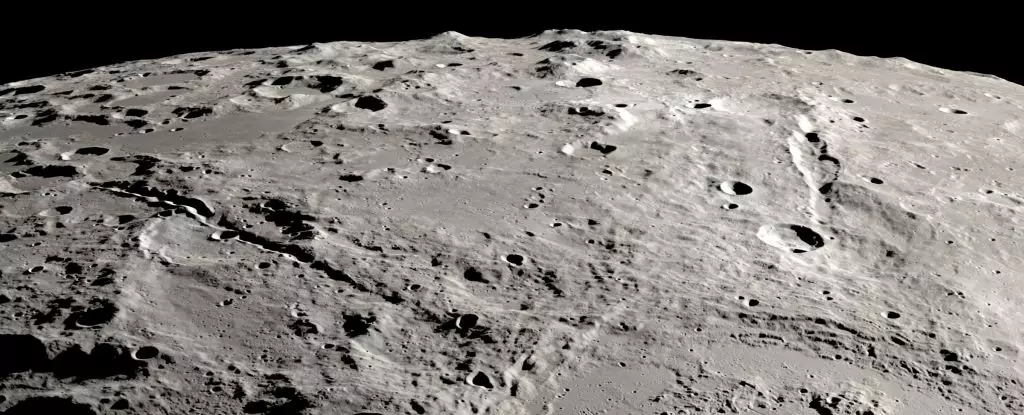The celestial body that has captivated humanity’s imagination for centuries is the Moon, a front-row seat to the solar system’s history. Among the varied geological features it boasts are profound canyons that rival Earth’s Grand Canyon in their scale and intrigue. While Earth’s Grand Canyon has been sculpted through millennia of water erosion, the Moon’s canyons have emerged through quite different, rapid cataclysmic events. Recent scientific efforts have shed light on the mechanisms behind the lunar formations, particularly the massive canyons known as Vallis Schrödinger and Vallis Planck.
Unlike Earth’s gradual reshaping by natural elements, the Moon’s surface canyons have a more violent origin. Vallis Schrödinger and Vallis Planck were formed after a colossal impact event, challenging our understanding of lunar geology. Located near the south pole on the Moon’s far side, these canyons stretch impressively far: Vallis Schrödinger reaches 270 kilometers (168 miles) and plunges 2.7 kilometers deep, while Vallis Planck spans 280 kilometers (174 miles) and goes even deeper at 3.5 kilometers. When compared to the Grand Canyon in Arizona, which is longer at 446 kilometers but shallower at 1.86 kilometers, the settings of lunar canyons invite a fascinating exploration of how celestial forces can shape and carve landscapes in mere moments.
Researchers have turned their attention to the fascinating processes behind the formation of these lunar canyons, particularly the role of ejecta rays—material ejected during impact events. Under the guidance of planetary scientist David Kring from the US Lunar and Planetary Institute, a team of scientists has taken a unique approach: by creating surface maps that detail the distribution and directional flow of ejecta from the Schrödinger impact event. These maps are critical because they allow for a reverse engineering of the impact, effectively piecing together the creation story of these canyons.
The findings are remarkable. The team determined that the impact resulting in these canyons was not uniform but instead asymmetric, with a significant amount of the ejecta directed away from the south pole. The velocities involved in this event were staggering, with the expelled materials traveling at speeds between 0.95 and 1.28 kilometers per second. Such intense energy, quantified at 130 times greater than the collective power of global nuclear weaponry, highlights the scale of the influence that impact events can have across planetary surfaces.
As missions to the Moon become imminent, particularly the upcoming NASA Artemis III mission scheduled for 2027, these geological revelations carry profound implications for lunar exploration. The proposed landing sites for astronauts might be strategically located away from the areas that experienced the most intense ejecta fallout, potentially allowing scientists to study older, unscathed layers of lunar material. This presents an unprecedented opportunity to gain insights into the Moon’s history and, by extension, the early solar system.
While the Schrödinger impact occurred approximately 3.8 billion years ago, its remnants can still inform us today about the Moon’s surface and its geological narrative. As astronauts traverse this uncharted territory, their discoveries may provide a clearer picture of the impact processes that have shaped not only the Moon but also other celestial bodies.
The canyons of the Moon, particularly Vallis Schrödinger and Vallis Planck, tell a story of impact rather than erosion. Through advanced mapping techniques and analysis of ejection patterns, scientists are piecing together how these vast structures were formed in brief, monumental bursts of energy. As we prepare to return to the Moon, the potential for discovering unknown geological information strengthens our understanding of not just the Moon, but also the forces that have sculpted planetary surfaces in the entire solar system. The Artemis mission represents a pivotal moment in lunar exploration, where every rock and canyon will contribute to our knowledge of the past and influence our journey into the cosmos.

